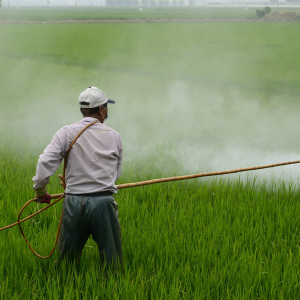
This paper attempts to quantify for the first time the planetary boundary for “novel entities” (NE-PB), including chemicals, new types of materials and modified forms of life. It focuses on chemical pollution, in particular plastics, and concludes that we fall outside a “safe operating space” for this planetary boundary.
The authors discuss the difficulties of quantifying the NE-PB. For most planetary boundaries, a “control variable” is identified: this is a measurable feature that is causally linked to the boundary in question. For example, atmospheric CO2 concentration is linked to climate change, and hence measuring perturbations away from its historical state can give an indication of the risk of passing thresholds at which large-scale, irreversible changes take place.
In the case of novel entities introduced by humans, there is no natural variability against which to track current levels. Furthermore, there are no historical precedents for identifying thresholds at which the Earth system significantly changes its behaviour in response to novel entities. The complexity of novel entities’ impacts, including biological, physical and chemical effects, also makes it difficult to predict interactions with other planetary boundaries.
The authors argue that a control variable for NE-PB must be feasible (i.e. measurable, with sufficient data availability), relevant (i.e. robustly linked to effects on the Earth system) and comprehensive (i.e. able to capture the global scope of the problem).
They use these requirements to assess several possibilities for the NE-PB control variable, including trends in the production volume of novel entities (e.g. chemical or plastics), trends in the release of novel entities, and unwanted impacts of novel entities (e.g. toxicity of chemical pollution or disturbance to biosphere integrity by plastic pollution). Since none of the candidate variables alone meet all three requirements, they suggest that the set of candidate control variables should be used, together, to monitor the NE-PB.
For example, while the production volumes of plastics and many pesticide active ingredients are going up over time (i.e. production volume is well documented and hence this is a feasible control variable), it is difficult to link these trends directly to release and impacts.
Regarding where the NE-PB should be considered to lie, the author propose the following definition:
“...the safe operating space of the NE-PB is exceeded when annual production and releases increase at a pace that outstrips the global capacity for assessment and monitoring.”
They argue that, based on this definition, we are already operating beyond the NE-PB, and that releases of novel entities should be limited to a rate that is “commensurate with the physical and chemical capacity of the Earth system”.
Note that the proposed NE-PB definition does not itself appear to quantify these physical and chemical capacities.
Abstract
We submit that the safe operating space of the planetary boundary of novel entities is exceeded since annual production and releases are increasing at a pace that outstrips the global capacity for assessment and monitoring. The novel entities boundary in the planetary boundaries framework refers to entities that are novel in a geological sense and that could have large-scale impacts that threaten the integrity of Earth system processes. We review the scientific literature relevant to quantifying the boundary for novel entities and highlight plastic pollution as a particular aspect of high concern. An impact pathway from production of novel entities to impacts on Earth system processes is presented. We define and apply three criteria for assessment of the suitability of control variables for the boundary: feasibility, relevance, and comprehensiveness. We propose several complementary control variables to capture the complexity of this boundary, while acknowledging major data limitations. We conclude that humanity is currently operating outside the planetary boundary based on the weight-of-evidence for several of these control variables. The increasing rate of production and releases of larger volumes and higher numbers of novel entities with diverse risk potentials exceed societies’ ability to conduct safety related assessments and monitoring. We recommend taking urgent action to reduce the harm associated with exceeding the boundary by reducing the production and releases of novel entities, noting that even so, the persistence of many novel entities and/or their associated effects will continue to pose a threat.
Reference
Persson, L., Carney Almroth, B.M., Collins, C.D., Cornell, S., de Wit, C.A., Diamond, M.L., Fantke, P., Hassellöv, M., MacLeod, M., Ryberg, M.W. and Søgaard Jørgensen, P., 2022. Outside the Safe Operating Space of the Planetary Boundary for Novel Entities. Environmental science & technology.
Read the full paper here. See also the TABLE explainer Food systems and contributions to other environmental problems.












Post a new comment »